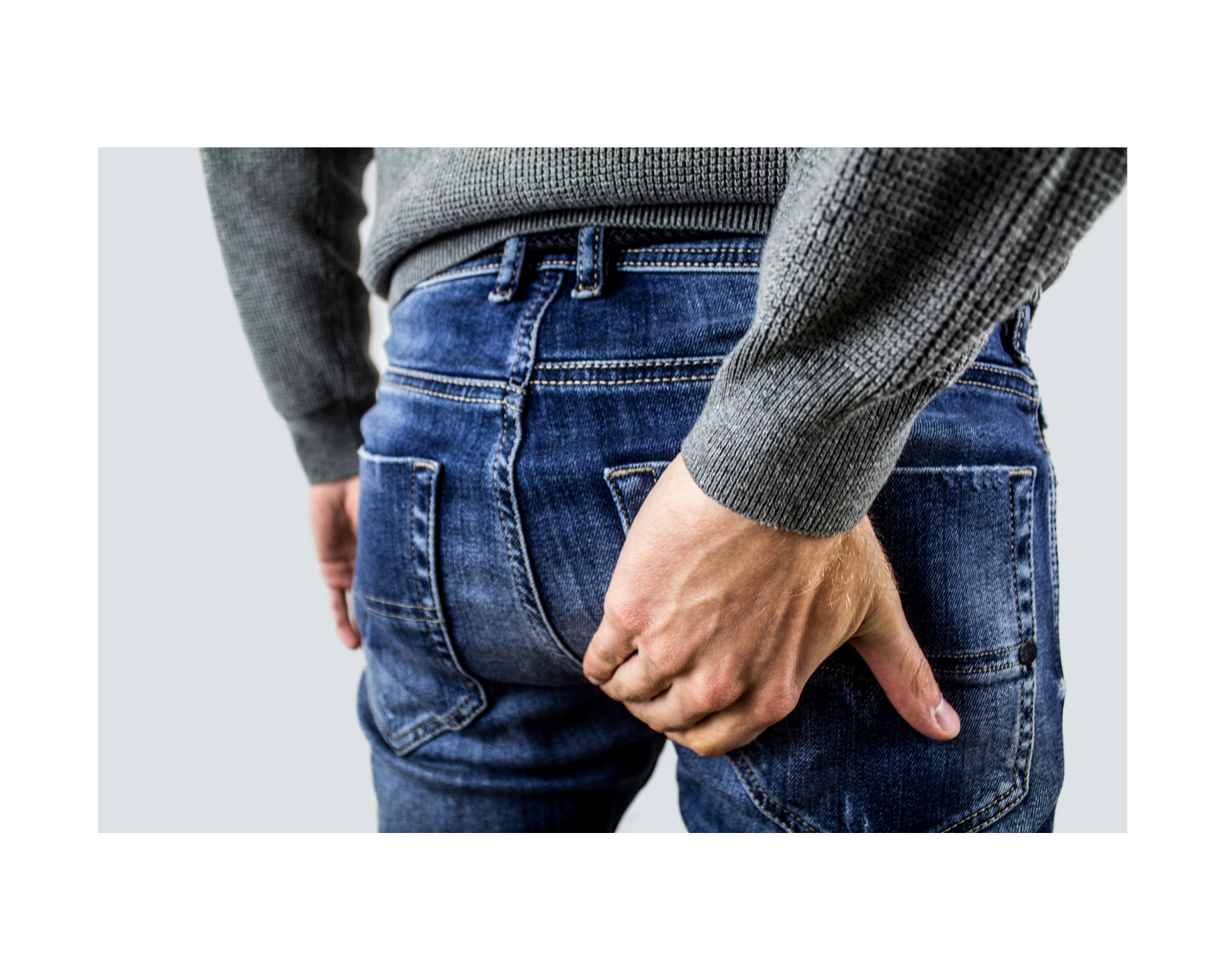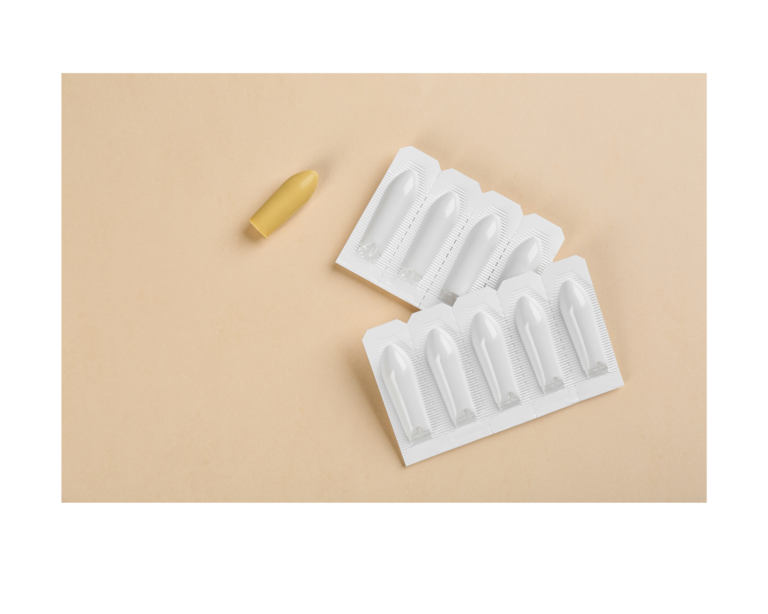
Hemorrhoids and hemorrhoidal attacks
“Doctor, my butt hurts!”
People often say “I have hemorrhoids” to refer to pain in the anus. What many do not know is that we all have hemorrhoids. The pain experienced often accompanies a hemorrhoidal crisis, which is an inflammation and excessive dilation of the hemorrhoidal veins, primarily causing pain and bleeding. This crisis is also called hemorrhoidal disease. It is estimated that one in two people over the age of 50 is affected by hemorrhoids, with a higher prevalence in developed countries and among more advantaged social classes. In Africa, one in two people would be affected by this condition. This disease affects men and women equally.
Hemorrhoids
Hemorrhoids are a specific network of veins called hemorrhoidal veins that are part of the anatomy of the anal canal and the anus. They contribute to continence (the ability to retain stool and gas). Several types of hemorrhoids are distinguished:
- Internal hemorrhoids located at the upper part of the anal canal, sensitive to the pressure of gas and stool.
- External hemorrhoids located under the skin around the anus, which is very sensitive to pain.
Because hemorrhoids form a very superficial vascular network, “complications” are common and give rise to symptoms. We therefore commonly refer to hemorrhoids to describe the appearance of these symptoms, which constitute hemorrhoidal disease.
Risk Factors for Hemorrhoids
The causes of hemorrhoids are numerous and can vary from person to person. Likewise, anyone can experience hemorrhoidal symptoms at least once in their life. Common factors that promote the development of the disease include:
Bowel Transit Disorders
Constipation is one of the main causes of hemorrhoidal disease. Indeed, repeated straining to pass stool exerts pressure on the hemorrhoids. Prolonged sitting on the toilet and the use of certain laxatives to combat constipation also promote a hemorrhoidal crisis. Conversely, diarrhea episodes—often irritating to the anus—do not help prevent hemorrhoids.
Lifestyle Factors
Several factors related to lifestyle come into play.
First, diet. A diet high in spicy foods, meats, coffee, tea, colas, and alcohol promotes the onset of hemorrhoidal disease symptoms. Likewise, a low-fiber diet combined with inadequate hydration leads to hard stools, which can cause evacuation problems or constipation.
Next, movement habits. Sedentary behavior and prolonged sitting, as well as activities involving heavy lifting, can favor hemorrhoids.
Overweight and obesity can also be triggering or aggravating factors. Losing weight will reduce pressure on the veins in the anal region.
Anal intercourse can also provoke hemorrhoids.
Certain Physiological States
Nearly one third of pregnant women suffer from hemorrhoids, especially in late pregnancy, and 20% after childbirth. This is due to compression of the vessels by the baby in late pregnancy, along with hormonal changes, constipation, difficult labor, a large infant, and other causes.
Age is also a factor; muscle and tissue laxity around the anus increases with age, which can cause hemorrhoids to protrude. This is due to the natural aging process.
Certain diseases, such as long-term heart or liver conditions, can cause blood to pool in the abdomen and pelvic region, leading to hemorrhoidal disease.
Symptoms of Hemorrhoids
The most common symptoms of hemorrhoidal crises include pain, bleeding, itching, and a burning sensation.
Pain
Day-to-day discomfort is felt around the anus. Pulling, burning, and itching sensations around the anus may also occur, disrupting daily life.
Pain is also present during a hemorrhoidal crisis. External hemorrhoidal crises manifest as a small lump on the edge of the anus, the same color as the skin. This lump often causes severe pain because the anal lining is highly vascularized and innervated. It is accompanied by sensations of heat, swelling, and heaviness around the anus. Pain is aggravated by defecation or physical exertion and is relieved by lying down. It lasts 2 to 4 days.
Internal hemorrhoidal crises are usually not painful.
Bleeding
Bleeding is very common with hemorrhoids. Internal hemorrhoids can produce streams of bright red blood you may see on toilet paper or in your stool. The bleeding varies in amount and is generally painless.
Prolapse
Hemorrhoidal prolapse can cause irritation, itching, or a frequent urge to pass stool without success. It is characterized by the protrusion of internal hemorrhoids outside the anus during straining.
Diagnosis
Types of Hemorrhoidal Crises
There are two types of hemorrhoidal crises: internal and external.
Internal hemorrhoids are located in the rectum and are less painful. Some people may have larger internal hemorrhoids that descend and protrude outside the anus—known as prolapsed hemorrhoids. These larger hemorrhoids can cause irritation but often retract into the rectum and resolve without treatment.
External hemorrhoids, on the other hand, can become painful or itchy when a blood clot forms (thrombosis).
When blood clots in an external hemorrhoid, it can cause a thrombosed external hemorrhoid. This usually occurs after significant physical activity (such as cycling) or trauma like childbirth. It is painful, blue-purple in color, and may bleed. Thrombosis generally resolves on its own within one to two weeks. Thrombosis of internal hemorrhoids is less common.
How the Doctor Proceeds
The doctor reviews your medical history and performs a physical exam. This may include a digital rectal exam (the doctor inserts a gloved finger into the rectum) to check for internal hemorrhoids. It may also include an anoscopy (a small tubular instrument to examine the anus) or a proctoscopy (a small tubular instrument to examine the anal cavity, rectum, or sigmoid colon).
This examination assesses the size and position of the hemorrhoids and allows the doctor to prescribe the most appropriate treatment.
Treatment
There are many treatments for hemorrhoidal crises, ranging from home remedies to medications. For intense pain, your doctor may prescribe analgesics. If you experience rectal bleeding, your doctor may recommend medications to reduce the size of the dilated veins.
First, Modify Your Lifestyle
Address bowel transit disorders, particularly constipation. This initially involves:
- A sufficient intake of dietary fiber. Fiber supplementation has been shown to reduce symptomatic prolapse and bleeding.
- Adequate hydration
- On the toilet: avoid excessive straining and prolonged sitting.
Medications

Several medications can be taken orally or applied locally.
Orally, bulk-forming laxatives are indicated to relieve constipation. These laxatives increase stool frequency and improve consistency, making stools softer. Examples include psyllium, ispaghula, sterculia gum, and wheat bran.
To treat the disease itself, various drug classes can be used: simple analgesics, nonsteroidal anti-inflammatory drugs, and venotonics. These medications are generally well tolerated, including during pregnancy, with few exceptions.
Local treatment may involve multiple preparations such as suppositories, creams, or ointments. Corticosteroids, lubricants, and “protective” agents may be used based on their presumed mechanism of action.
Instrumental Treatment
Instrumental treatments aim to induce fibrosis that fixes the mucosa and reduces vascularization; these are performed endoscopically on an outpatient basis without anesthesia. The three main techniques are elastic band ligation, photocoagulation, and sclerotherapy.
Surgical Treatment
Surgical treatment of hemorrhoidal pathology is reserved for severe cases or when medical or instrumental treatments fail. The procedure may be performed under local or general anesthesia, depending on the intervention.
- Thrombectomy involves excising a thrombus, mainly in external thrombosis, usually under local anesthesia.
- Conventional hemorrhoidectomy includes various techniques at the surgeon’s discretion, such as pedicled or circular resection, with wounds left open or closed—no single technique has proven superior.
- Hemorrhoidopexy or anopexy (Longo procedure) uses a circular stapler to excise a rectal cuff.
- Doppler-guided hemorrhoidal artery ligation involves tying off the arteries supplying the hemorrhoidal plexus under Doppler control.
Home Remedies
You can also try some home remedies to relieve hemorrhoidal symptoms. These include using cold compresses to reduce swelling and pain, and applying topical creams to soothe itching and burning. Ensure you drink plenty of water and eat fiber-rich foods to prevent constipation.
Homeopathic remedies for hemorrhoidal crises may also be an option. However, it is important to consult a qualified professional before using homeopathy, as it can interact with conventional medications.
Essential oils can be used as a natural remedy for hemorrhoids. Lavender, chamomile, and tea tree oils have anti-inflammatory properties that may help reduce swelling and itching. Mix a few drops with a carrier oil such as coconut or jojoba oil, then apply to the affected area.
Possible Complications
The main notable complication is strangulation of hemorrhoids at the anus, causing severe and persistent pain, especially in cases of thrombosed hemorrhoids. Otherwise, hemorrhoids do not lead to serious health complications.
Hemorrhoidal crises are a common issue that affects many people at some point in their lives. Although it can be embarrassing or painful, it is important to know that hemorrhoids are treatable and there are many options to relieve symptoms and prevent complications. They can also be prevented by maintaining a healthy lifestyle, exercising regularly, and eating a balanced diet.
If you experience frequent hemorrhoidal crises, consult your doctor to discuss the best treatment options for you.
SennaCare connects you with healthcare professionals to identify and treat hemorrhoidal crises. For more information, feel free to contact us.

FAQ
- What causes hemorrhoidal crises? Hemorrhoidal crises can be caused by factors such as an unbalanced diet, lack of exercise, and chronic constipation.
- How can I recognize hemorrhoidal symptoms? Common symptoms include pain, bleeding, itching, and swelling around the anus.
- What treatments are available for hemorrhoidal crises? Treatments include medical options such as creams, suppositories, and pain relievers; non-medical options such as sitz baths and cold compresses; and surgical interventions if necessary.
- Can hemorrhoidal crises be prevented? Yes, they can often be prevented by adopting a healthy lifestyle, eating a balanced diet, exercising regularly, and avoiding prolonged sitting.
- What are the side effects of hemorrhoid surgery? Common side effects include pain, swelling, and a longer recovery period. However, the long-term benefits of surgery often outweigh the drawbacks.
Source: ameli.fr, vidal.fr, gmfu.ca

